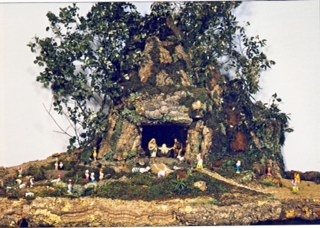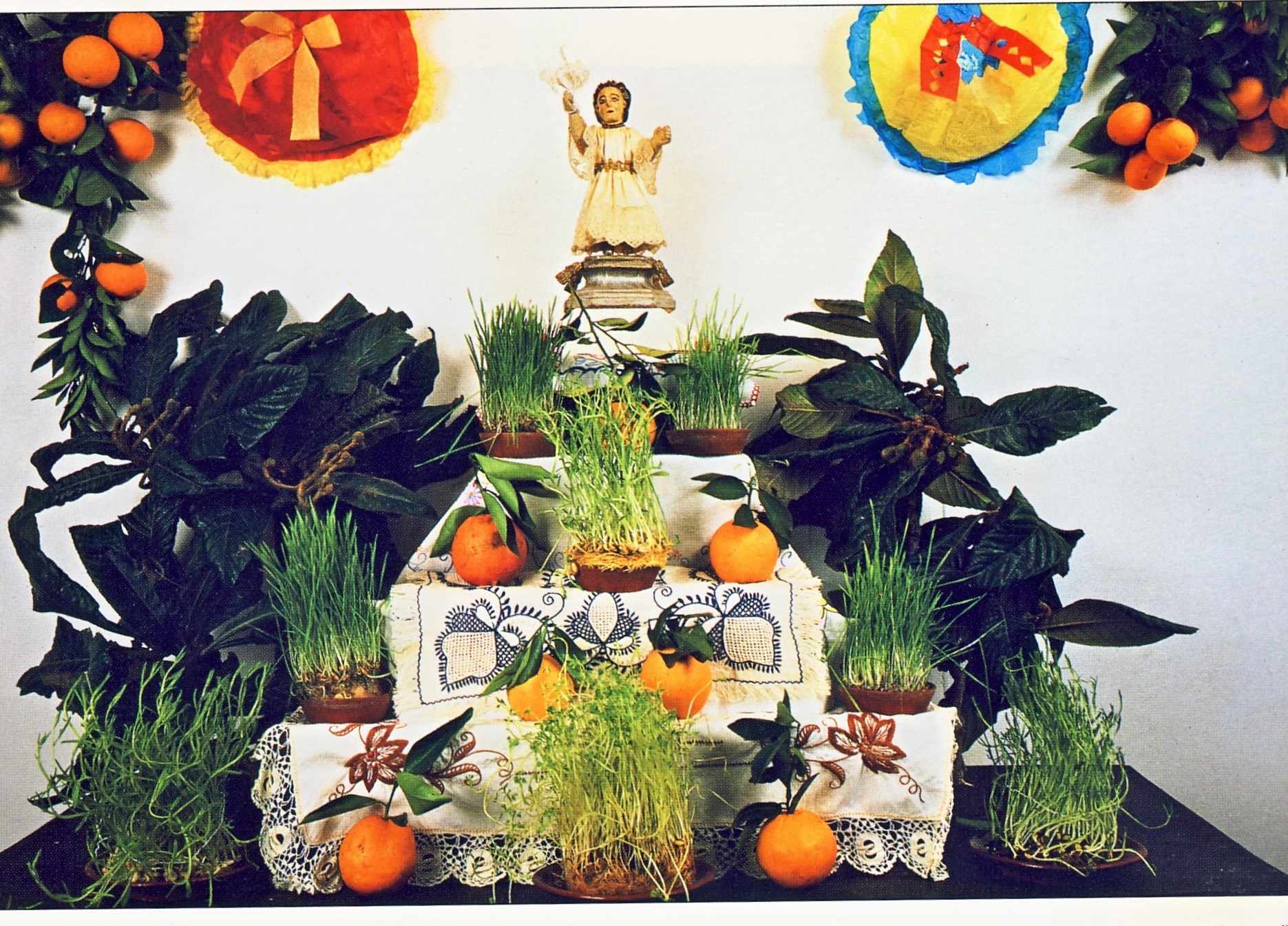Lynne Booker
Feliz Natal!
The autumn in Britain is dominated by commercial and television advertising and it seems that as soon as summer is over, there are constant reminders of how many shopping days there are before Christmas. Portugal is no different - except that planning for Christmas usually involves planning with food! The figs that were lovingly picked and dried in September will re-emerge in December. They may be flattened into star shapes, decorated with almonds and then given a frosting of sugar and cinnamon. Or they may be opened up and stuffed with chopped almonds, cinnamon and sugar. These confections are often gifts and they reflect generations of tradition and oodles of patience. Having realised that many Portuguese have a sweet tooth, in return I give homemade mince pies. They are often received with a mixture of puzzlement and bravado, but all is well when the recipients realise they are sweet and made with dried fruit.
In the campo, mid December was the time for killing the pig. It had been carefully fed on the year´s vegetable and household waste and fruit overproduction: tomatoes, potatoes, green beans, cabbages, plums, pumpkins, sweet potatoes and of course acorns which give the pork a very special flavour. Each family had its own recipe for the chouriço which would be hung inside the chimney to give it that special smoked flavour.

It comes as no surprise that pork is the traditional Christmas Eve fare for country people. Boiled pork would be served with cabbage and fried pork would be served with garlic. In the serra some people begin their Christmas celebrations on the day of the pig killing! Other special Christmas dishes are cabidela de galinha and ensopado de galo (chicken stew). Further towards the coast on the barrocal, the Christmas Eve pork is often cooked with shellfish. On the coast many people prefer pork with cabbage, but bacalhau in one of its many guises is the usual dish on Christmas Eve. There must be as many recipes for cooking bacalhau as there are days in the year.
Traditional Christmas desserts include the popular rabanadas (a little like French toast - bread soaked in eggs and then dipped in sugar and deep fried; sometimes called fatias douradas). If the rabanadas and the dried figs with almonds were not enough, other delights might include filhosos or filhós (fried pumpkin dough); azevias (round cakes made of a crust filled with a mixture of chick peas, sugar and orange peel); aletrias (sweet vermicelli with eggs); pastéis de batata-doce (sweet potato cakes) and, of course, the ubiquitous bolo-rei.

Originally from France bolo-rei used to be the traditional cake for New Year celebrations but it is now eaten throughout the Christmas and New Year period. There is a legend that when the Three Kings arrived at the stable where Jesus had been born, they could not decide which one would enter first. They made a cake and put in a broad bean (fava). The cake was cut into three and he who had the slice with the bean would go in first. Recently, if you were lucky enough to get the slice with the bean, you could ask a favour, or perhaps even have the privilege of paying for dinner! It is no accident that bolo-rei is crown shaped, and the dough represents the gold, the fruit represents the myrrh and the aroma the incense of the gifts of the Three Kings. The colourful tradition of the bean and of the small gift concealed in the cake has now fallen foul of drab EU legislation.
Whereas the Algarve consoada (Christmas Eve meal) may vary, the special Christmas Day lunch usually consists of chicken soup. Each person at table receives mouthful of the loaf that has been wrapped in pork lard for a year and a small piece is put in the soup. For the sobemesa course there are more sweet cakes and pastries.
The cepo de Natal (yule log) burns in the fireplace throughout Christmas Day and its ashes are saved to protect the house from lightning strikes. A tradition in some families is to put oranges on the table to bring them good fortune. Others set extra places at table and yet others throw crumbs or seeds in their fireplaces. They think about the souls of people who have died and hope that those souls will bless their harvests in the coming year.
In some areas there is a custom which is similar to the English tradition of leaving out a glass of port and a mince pie for Santa Claus. It is not on Christmas Eve but on the evening of 5 January that children fill their shoes with carrots and straw and place them along windowsills and in doorways. The hungry horses of the Three Kings will eat the carrots and straw and leave behind gifts of candied fruit and sweet pastries for the children.
Lisbon´s Terreiro do Paço had the tallest Christmas tree in Europe in 2007 at 76m. When in 2008 the tree was erected in Parque Eduardo VII, it was a relatively small 44m, since apparently anything taller would endanger aeroplanes flying into Portela Airport. The buying of Christmas trees for the home is a recent phenomenon in Portugal. Of far greater vintage is the building and display of presépios (nativity scenes or cribs), which can be found in people´s homes, in churches and in public spaces. Early in the month of December, Algarveans sow seeds of wheat, barley or lentils (deitar os trigos) and they would use the shoots that had come up by Christmas time in their nativity scenes. The history of the presépio dates back to St Francis in 1223, and after nearly 800 years it has become an art form in Catholic countries. The traditional Christmas Eve mass is known as Missa do Galo - the rooster´s mass because the rooster announced the day of Jesus´ birth. Families returning from the Missa do Galo put o menino Jesus into his crib for the first time.


The tradition of carol singing exists in Portugal, but at a different time. Whereas English speakers are accustomed to hear carols on the days leading up to Chistmas Day (and especially on Christmas Eve), Portuguese tradition is to sing charolas (sometimes called janeiras) around New Year and the Day of the Kings (6 January). The English Christmas carol and the Portuguese charolas come from the same Greek word and refer to a dance where people hold hands and sing in supplication or in thanksgiving, but the tradition has evolved in both countries to refer to singing only. The idea is the same - groups of people sing their carols at front doors and in return are given sweemeats or money for charitable causes.
Christmas is a time for celebrating with friends and family, sharing food and exchanging gifts. However you plan to spend Christmas 2010, may your Christmas be happy! If you are looking for ideas for Christmas presents and you want to know more about Christmas traditions in the Algarve, I can recommend the book Natal no Algarve Raízes Medievais by Padre José da Cunha Duarte.
